Asia Travel Pulse
Exploring Luxury Travel Destinations: Now, Affluent Travellers Choose London, Hokkaido, Mersa Matruh, and Mendoza
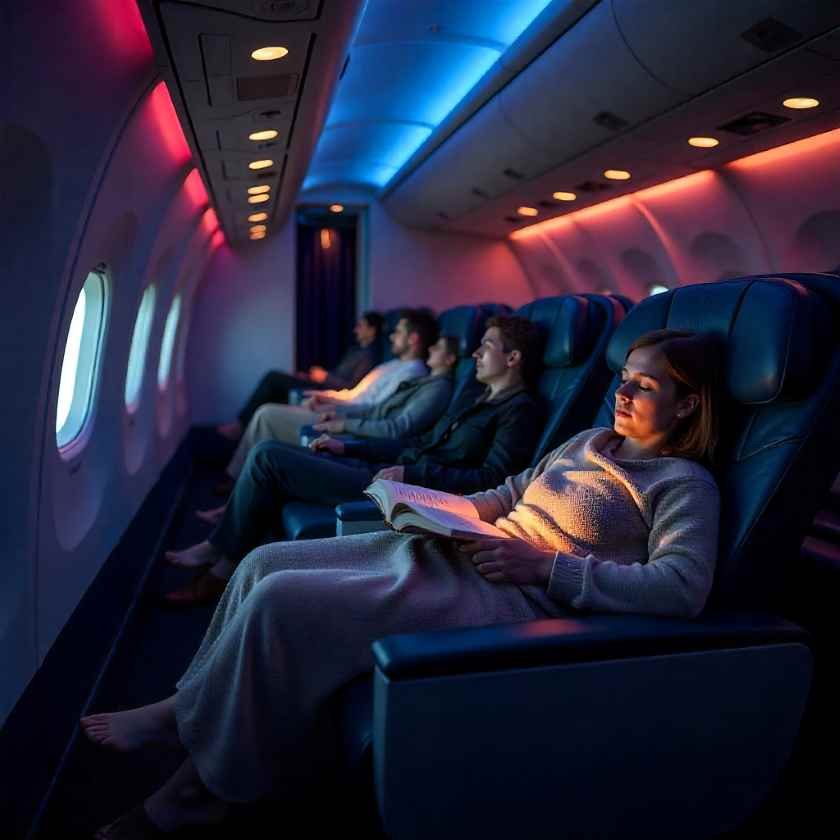
Published on
August 7, 2025 |
By: TTW News Desk
Wealthy travellers are still the engines behind the planet’s travel spending, according to the latest Visa Global Travel Insight report, which came out in July 2025. Households earning above $200,000 a year—fewer than 5% of all homes worldwide pumped in nearly one-quarter of the world’s travel money in 2024, the report shows. Designed from anonymised VisaNet data, the study maps out not just where these travellers go, but also the very distinct spending patterns that set them apart.
Wealthy customers are keeping global tourism in the fast lane, even when the bigger economy hits bumps. With roomier budgets, they loosen their wallets for nicer hotels, one-of-a-kind experiences, gourmet dining, and designer shops. They gravitate toward quieter, off-the-path places, and their spending is steadier during downturns because luxury is a smaller slice of their budgets.
VisaNet data show that in 2024, wealthy cardholders spent three times as much on overseas credit transactions as their less affluent peers, with marked differences by region. In Hong Kong, for example, luxury retail alone made up over half of affluent cardholders’ overseas purchases, revealing their strong inclination toward high-ticket items and premium shopping excursions.
Top Spots for Affluent Travellers
According to the latest Visa Global Travel Insight, affluent travellers are still drawn to cities that blend cultural, luxury, and natural attractions. London came out on top again, celebrated not only for its iconic museums and upscale shopping streets, but also for its luxury hotels and bespoke services. The British capital keeps pulling in high-net-worth visitors looking for polished, premium experiences.
Yet the report also noted an emerging trend: wealthy travellers are increasingly exploring lesser-known or off-peak places that promise privacy and tranquillity. Rising favourites among the elite from emerging markets are Hokkaido in Japan, known for its winter sports and gourmet food; Mersa Matruh, a hidden gem on the Egyptian coast; and Mendoza, Argentina, where world-class vineyards meet dramatic mountains.
Hokkaido, Japan: Japan’s northernmost island, Hokkaido, is quickly winning the hearts of wealthy travellers. Its breathtaking scenery, top-notch ski resorts, and world-class outdoor adventures set it apart. The island’s upscale lodges, set in peaceful mountain valleys and beside shimmering lakes, make it a refined choice, far removed from the larger, more crowded cities.
Mersa Matruh, Egypt: Along Egypt’s northern coast, Mersa Matruh has turned into the preferred retreat for affluent visitors. Unlike the busy streets of Cairo and Alexandria, this gem has calm, powder-white beaches and five-star hotels that promise privacy and tranquillity. The combination of gentle waves and luxurious cabanas draws high-income travellers who want to unwind in style.
Mendoza, Argentina: Nestled at the foothills of the Andes, Mendoza is the crown jewel of Argentina’s wine country. Exclusive vineyard tours, private tastings with star winemakers, and lavish country estates keep wealthy guests coming back. Whether hiking in the mountains or sipping a glass of Malbec in a private cellar, Mendoza perfectly blends adventure and luxury, appealing to travellers who want both action and relaxation.
Asia Pacific: Up-and-Coming Hub for Wealthy Travellers
The Asia Pacific region is on track to become a major player in global tourism, led by a rising wave of wealthy travellers. The number of affluent households in Asia is projected to jump by 8% each year until 2030, adding millions of new high-income travellers from markets like China, India, and Japan who are eager for overseas trips.
Growth in this segment is driving countries and cities around the globe to tailor their offerings for these jet-setting consumers, who are increasingly on the lookout for high-end stays, exclusive services, and authentic cultural experiences.
Spending Trends of Wealthy Travellers
The Visa Global Travel Insight report sheds light on how affluent travellers spend their money, showing patterns that set them apart from the average tourist. In Australia, for instance, domestic travellers who spend more than $500 each night on accommodations—tagged as luxury guests—channel about a third of their entire travel budget into fine dining, premium drinks, and luxury shopping. This reveals a strong appetite for gourmet meals and high-end retail, showing how wealthy tourists are willing to pay for memorable experiences and exclusive items they can’t find back home.
Loyalty Programs: The Secret Sauce for Affluent Travellers
A recent study shows that loyalty programs are a big deal for wealthy travellers. About two-thirds of rich American travellers say that airline or hotel loyalty points are a deal-maker when booking trips. This finding puts a spotlight on why loyalty programs matter so much in travel and hospitality. By piling on perks and points, brands keep luxury travellers coming back for more, building strong and lasting ties with a high-income audience that’s pricey to win but priceless to keep.
Affluent Travellers’ Spending vs. Mass-Market Tourists
The same report also says that affluent travellers plan to boost their spending on international trips by 38% more than average tourists in the coming year. That’s a huge gap. Luxury hotels, private tours, and one-off experiences that check every box are not just nice to have, they are what wealthy travellers expect when they reach for the skies with their wallets. Meeting these high expectations can turn a good trip into a great one, and that’s exactly what brands chasing deep pockets are banking on.
Conclusion: Impact on the Tourism Sector
The Visa Global Travel Insight report makes it clear: wealthy travellers are now the heartbeat of global tourism. Their travel habits and bold spending redefine how cities and entire regions design their tourist offerings. Places that invest in luxury tours, top-tier hotels, and designer shopping stand to win their share of this premium audience.
As the affluent traveller cohort keeps expanding especially across the Asia-Pacific, destinations that roll out tailored and exclusive experiences are likely to stay on the wish list of high-income vacationers. By staying tuned to these evolving preferences, the global tourism industry can shape itself to delight the affluent market, which, in turn, fuels growth and boosts local economies across the globe.
Asia Travel Pulse
Thailand, Malaysia, Taiwan And Hong Kong Outperform Emerging Destinations Across Asia As New Traveler Data Confirms Their Continued Dominance In Repeat Tourism And Regional Travel Loyalty
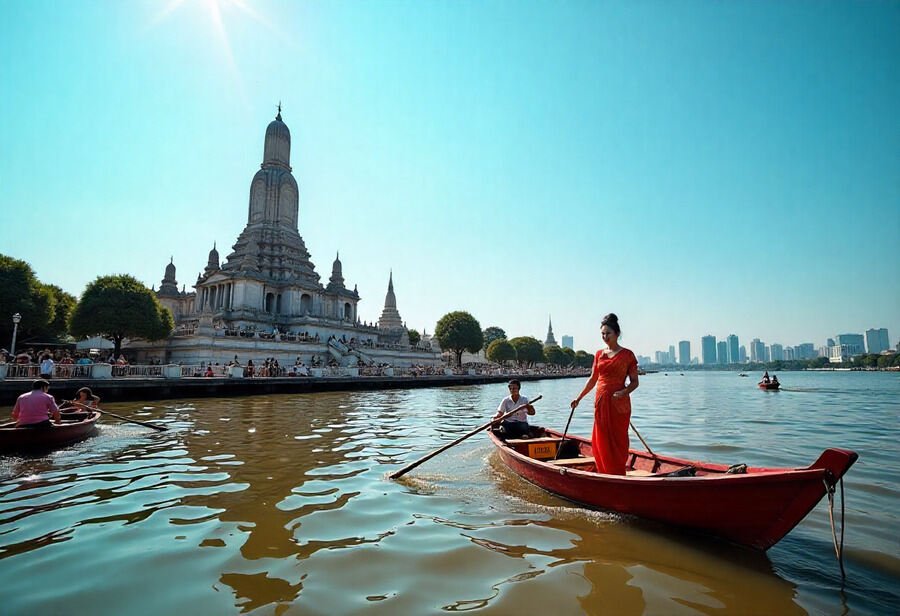
Published on
August 7, 2025 |
By: TTW News Desk
Thailand, Malaysia, Taiwan, and Hong Kong have once again emerged as top-performing destinations in Asia, surpassing a growing field of emerging travel markets, thanks to their unmatched appeal for repeat visitors and strong regional travel loyalty. New traveler data confirms that these destinations continue to dominate because of their seamless connectivity, diverse offerings—from urban luxury to natural retreats—and traveler-friendly visa policies. Unlike newer destinations still building infrastructure and recognition, these four have successfully cultivated trust and emotional connection among both domestic and international tourists, solidifying their long-term popularity in Asia’s competitive tourism landscape.
A recent travel trend reveals that travelers across Asia are increasingly drawn back to destinations they’ve already visited. According to new data from a major digital travel platform, Asia’s most revisited cities for the first half of 2025 include Bangkok, Tokyo, Seoul, Bali, and Osaka. These cities lead the latest Repeat Visitor Ranking, which tracks destinations travelers book more than once within a six-month period. The list showcases places that continue to capture the hearts and itineraries of global tourists.
Rather than chasing new destinations, travelers are actively choosing to return to places they love. Whether it’s rediscovering hidden spots, revisiting favorite cafés, or simply relaxing in a familiar atmosphere, return travel is proving more desirable than ever. Many cities now see travelers returning not just annually, but multiple times in one year—underscoring the growing importance of emotional connection and experience continuity in the travel industry.
Bangkok Remains Asia’s Top Destination for Repeat Travelers
Bangkok ranks first on the Repeat Visitor Ranking for the second year in a row. The city’s vibrant street markets, rich cultural landmarks, and modern urban experiences consistently attract international visitors. From the serenity of riverside temples to the buzz of rooftop bars, Bangkok offers something for every kind of traveler—and it keeps delivering reasons to return.
To maintain this momentum, Thailand has introduced new travel promotions aimed at encouraging international arrivals. A special campaign running throughout July and mid-August features exclusive deals across hotels, shopping, and entertainment. These offers focus on travelers from key regional markets including India, China, Malaysia, Laos, and Vietnam, with the goal of increasing both first-time and repeat visits.
Thailand’s Other Cities Grow in Popularity Among Return Visitors
Beyond Bangkok, Phuket, Pattaya, Chiang Mai, and Hat Yai are also seeing strong numbers of returning travelers. Each destination offers its own unique experiences—whether it’s island adventures in Phuket, nightlife in Pattaya, cultural richness in Chiang Mai, or borderland charm in Hat Yai. Travelers who visit one city often return to explore others, adding to Thailand’s reputation as a multi-stop destination.
Thailand is making travel between cities easier. Planned infrastructure projects include airport expansions, improved public transport systems, and intercity rail upgrades. These enhancements aim to reduce travel time and make internal travel smoother, which will likely encourage even more repeat visits across different regions.
Japan, South Korea, and Indonesia Feature Strongly in Repeat Travel Trends
While Thailand dominates the top spots, other countries also feature prominently. Tokyo and Osaka, both in Japan, remain among the most revisited cities in Asia. Travelers return for a blend of traditional and contemporary culture. In Tokyo, repeat visitors enjoy everything from futuristic entertainment districts to historic shrines and seasonal cherry blossom views. Osaka, known for its food culture and warm hospitality, sees travelers coming back for its street food, markets, and historical sites.
Seoul, another top contender, attracts repeat travelers with its dynamic mix of fashion, heritage, K-pop, and high-tech convenience. Whether exploring ancient palaces or shopping in the city’s trendiest districts, returning tourists find new layers to experience each time they visit.
Bali also maintains its reputation as one of Asia’s most beloved destinations. Its natural landscapes, laid-back atmosphere, and wellness-focused experiences draw tourists back again and again. Many travelers who visit Bali once often return for longer stays, exploring different parts of the island or engaging in spiritual retreats.
Malaysia, Vietnam, Taiwan, and Hong Kong Round Out the Top 10
Malaysia appears twice in the top ten with Kuala Lumpur and Johor Bahru. Kuala Lumpur remains a top choice for its skyscrapers, shopping, and nightlife, while Johor Bahru benefits from its close proximity to Singapore and growing family-oriented attractions. Both cities offer return travelers a mix of comfort, culture, and convenience.
Da Nang in Vietnam continues to gain popularity for its coastal charm and historical appeal. Repeat travelers enjoy its beaches, local markets, and easy access to nearby heritage towns like Hoi An and Hue.
Taipei remains a favorite among urban travelers. With its blend of modern city life, traditional temples, and famous night markets, it keeps visitors engaged across multiple trips. Hong Kong, although just outside the top 10, continues to attract travelers who want a mix of cosmopolitan energy and cultural richness. Its diverse neighborhoods, harbor views, and shopping districts ensure there’s always something new to discover—even on a return trip.
Travelers Prefer Familiar Destinations With Depth and Variety
This shift toward repeat travel signals changing tourist behavior. Today’s travelers value familiarity, comfort, and deep experiences over novelty alone. Returning to a known destination allows them to dig deeper, explore off-the-beaten-path areas, and relax without the pressure of rushing through an itinerary.
Thailand, Malaysia, Taiwan, and Hong Kong continue to lead Asia’s tourism scene, outperforming emerging destinations due to their strong visitor loyalty, superior infrastructure, and consistently high repeat travel driven by convenience, safety, and diverse experiences.
Many travelers now treat repeat travel as a lifestyle—building lasting relationships with destinations they love. The increase in regional flight options, easy booking tools, and customized promotions encourages this kind of travel. Cities that offer a mix of culture, variety, convenience, and emotional connection are winning repeat visitors and becoming long-term favorites.
Asia Travel Pulse
Japan, Egypt, UAE, And Cambodia Link Into Global Travel Trends As Bangkok Becomes A Top Five Most Booked Summer City
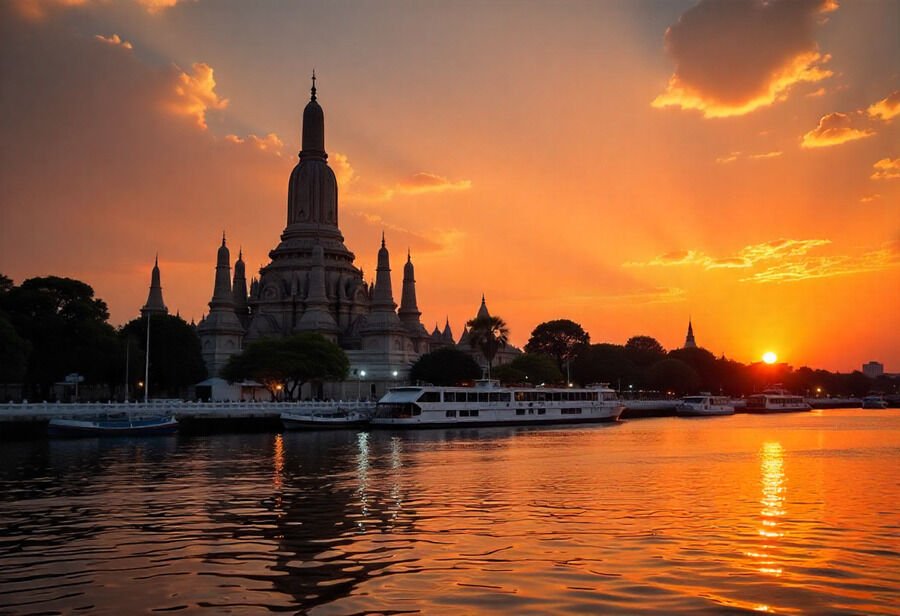
Published on
August 7, 2025 |
By: TTW News Desk
Japan, Egypt, UAE, and Cambodia are aligning with powerful global travel trends that favor culturally rich, accessible, and experience-driven destinations—and Bangkok’s leap into the world’s top five most booked summer cities reflects this shift perfectly. As travelers increasingly seek urban vibrancy, affordability, and diverse attractions, Bangkok has surged ahead thanks to its unique combination of tradition and modernity, convenient connectivity, and a renewed wave of international tourism from Asia, the Middle East, and beyond.
Even in a year marked by geopolitical tensions and economic uncertainty, Bangkok continues to rise as one of the most sought-after travel destinations in the world. The Thai capital has officially claimed a spot among the top five most searched and booked cities for international summer travel, according to a new global report based on millions of user interactions.
Travelers are choosing Bangkok over hundreds of other global destinations, placing it in the same league as Tokyo, Dubai, and Egypt’s Red Sea jewels — Hurghada and Sharm El Sheikh. This resurgence proves that the city’s magnetic pull remains as powerful as ever, even as Thailand faces regional border issues and political fluctuations.
Tourists Flock to Bangkok for Culture, Cuisine, and Unique Urban Energy
Travel data shows that Bangkok continues to attract millions thanks to its vibrant mix of cultural authenticity and modern convenience. Visitors immerse themselves in the city’s iconic street food culture, colorful night markets, revered temples, and thriving nightlife. Bangkok also serves as a launchpad for wider adventures across Thailand, including beach escapes, jungle treks, and heritage sites.
Unlike many destinations that rely heavily on seasonal tourism or natural attractions, Bangkok succeeds by offering a holistic experience year-round. From early-morning almsgiving with monks to rooftop cocktails at sky-high bars, the city delivers a wide spectrum of moments that resonate with travelers of all backgrounds.
Travelers today crave more than leisure — they want connection. Bangkok offers exactly that: a cultural depth and vibrancy that make visitors feel part of something greater. Whether it’s joining a local cooking class, visiting a traditional floating market, or simply navigating the chaotic charm of a tuk-tuk ride through Old Town, the city never fails to leave a lasting impression.
Data Reflects Surging Demand for Meaningful, Experience-Driven Travel
According to the report, global travel behavior continues to evolve toward experience-based tourism. People aren’t just looking to relax — they want to engage, explore, and understand. This shift in mindset favors cities like Bangkok, where every street corner holds a new story, flavor, or encounter.
Bangkok excels in offering these deeper experiences. Travelers can witness Buddhist rituals at dawn, explore hidden alleys filled with local artisans, or take canal boat rides that reveal a very different side of the city — one that still beats with the rhythms of old Siam. In doing so, visitors get more than a vacation. They gain perspective.
This trend has become even more pronounced as international travelers increasingly prioritize authenticity, sustainability, and cultural depth in their journeys. Bangkok’s well-established tourism infrastructure, paired with local traditions that remain deeply intact, creates the perfect environment for such travel aspirations to be fulfilled.
Thailand’s Capital Stands Strong Despite Regional Pressures
Thailand currently faces challenges, including an ongoing border dispute with Cambodia and internal political recalibrations. Yet Bangkok’s tourism sector shows remarkable resilience. While many nations have seen travel slow amid global tensions, Bangkok continues to attract high volumes of visitors thanks to smart destination marketing, airport connectivity, and traveler trust.
Tourism officials credit this success to the country’s efforts in rebuilding confidence after the pandemic and adapting quickly to global traveler demands. By focusing on safety, digital access, and sustainability, Bangkok has remained front and center on the global travel map.
Even with increased competition from destinations across Southeast Asia and the Middle East, Bangkok retains an edge. The city offers excellent value for money, with luxury hotels, culinary experiences, and guided tours often priced more affordably than in other global cities. This affordability, combined with the quality of experience, makes Bangkok a preferred choice for both first-time visitors and seasoned globe-trotters.
Street Food, Shopping, and Spirituality — A Complete Package
Bangkok’s continued rise can be directly attributed to the diversity of its offerings. Food alone brings millions — from fiery tom yum soup and spicy papaya salad served streetside to gourmet Thai fusion in five-star rooftop restaurants. The city’s food culture, recognized globally, acts as a gateway into Thai traditions and daily life.
On the other hand, Bangkok’s spiritual side offers a powerful counterbalance. Tourists visit landmarks like Wat Arun, Wat Pho, and the Grand Palace not only for their architectural beauty but also to understand Thai beliefs and customs. These sacred spaces give travelers a quiet moment amid the city’s sensory overload, adding layers of meaning to their journey.
For shoppers, Bangkok’s blend of high-end malls, bargain markets, and boutique local stores creates an irresistible draw. Siam Paragon, MBK Center, Chatuchak Weekend Market, and the buzzing fashion lanes of Pratunam offer everything from designer labels to handmade crafts — all within reach.
What the Future Holds for Bangkok Tourism
Looking ahead, tourism experts expect Bangkok to maintain or even elevate its position among the world’s top travel cities. Infrastructure upgrades, digital visa facilitation, and green tourism initiatives are already underway, ensuring that the city can handle increasing demand without compromising its character.
With experience-led travel on the rise, Bangkok is well-positioned to meet global demand for authenticity, connection, and sustainability. As international flight routes expand and digital nomads continue to favor Southeast Asia, Bangkok’s tourism future looks not only secure but promising.
Japan, Egypt, UAE, and Cambodia are riding the wave of global travel trends favoring culturally immersive and affordable destinations—driving Bangkok to rank among the world’s top five most booked summer cities due to its dynamic appeal, regional connectivity, and rising international demand.
In a world where travelers want more than snapshots — they want stories — Bangkok offers thousands, waiting to be lived.
Asia Travel Pulse
This Tokyo hotel is surrounded by glorious Japanese gardens
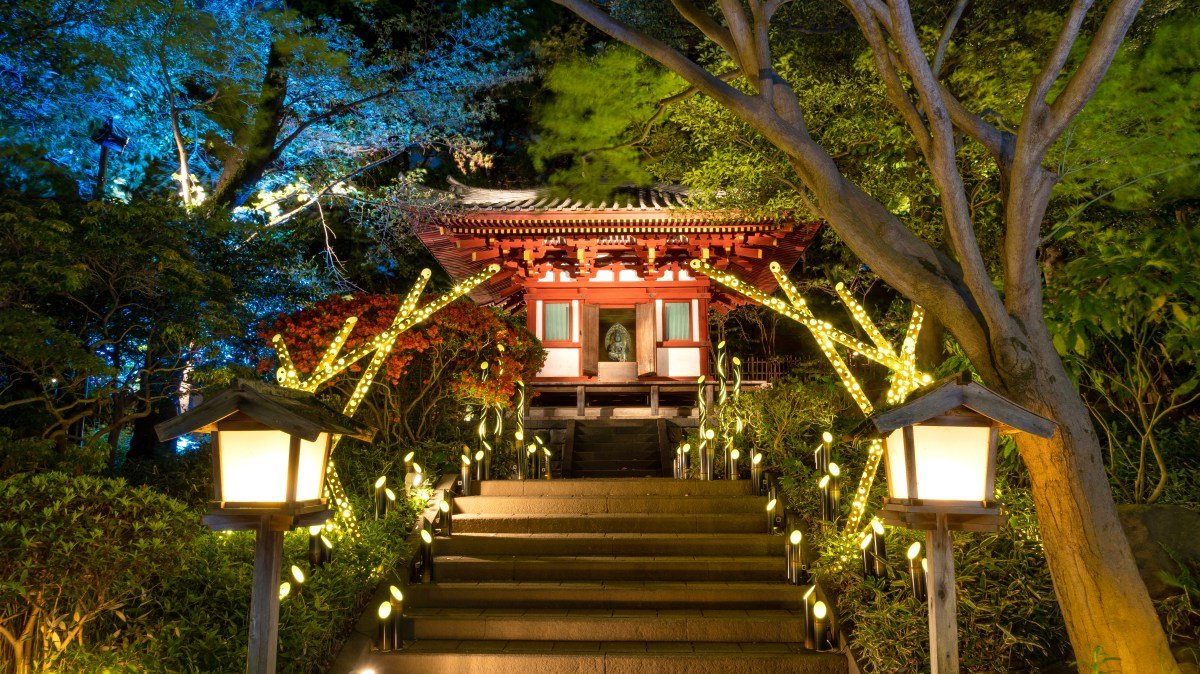
The Grand Prince Hotel Shin Takanawa rises serenely from a mass of greenery, the white balconies on each room making its façade look almost like it’s been embossed. Of the three Seibu Prince hotels here, Shin Takanawa offers the best balance of comfort and cost — and guests can use some facilities in the other two properties as well. All three benefit from access to sprawling Japanese gardens, which are especially beautiful in springtime.
The hotel’s large size can work against it: it’s popular for conferences, so the common areas sometimes become crowded, and service can lack a personal touch at busy times. However, it’s also a strength: among other facilities, the hotel has room for three restaurants, two lounges and an excellent bar.
Between its convenient location near Shinagawa Station, comfortable rooms, well-maintained facilities and reasonable price point, Grand Prince Hotel Shin Takanawa makes a great base for exploring Tokyo and the wider Kanto region.
Overall score 7/10
This article contains affiliate links, which may earn us revenue
Rooms and suites
Score 7/10
Most of the hotel’s 908 rooms — the Superiors — are on the first 30 floors. Each has a small balcony and a simple but sufficient bathroom with bath, shower and good-size mirror. The Natural category rooms are slightly soulless, but the Modern category ones have touches like adjustable lighting and earth-toned bed runners that warm things up significantly. They’re all large by Tokyo standards, but the triple and quad rooms feel a bit cramped.
The 14th and 15th floors are reserved for Club rooms (which are similar to the Modern Superior rooms) and spacious elegant suites, which all come with added perks. Chief among these is access to the Club Lounge, where complimentary breakfasts and snacks are served in a luxurious indoor space — all rich, dark colours and natural materials — or on the terrace. Club-floor guests also have access to facilities in the neighbouring Seibu Prince properties: the sauna and whirlpool bath (free) and the gym (extra fee) in the Prince Sakura Tower Tokyo; and the Club Lounge in the Grand Prince Takanawa.
Many rooms on the hotel’s north side have clear views of the red-and-white Tokyo Tower, while those facing south will enjoy the serene sight of Mount Fuji in the distance on clear days.
Food and drink
Score 8/10
There aren’t many restaurants in the immediate vicinity of the hotel, but with so many in-house options you won’t mind. Buffet breakfasts at Zakuro include a huge range of Japanese and western food, omelettes and scrambled eggs to order, and a salad and fruit bar. The signature dish is the Prince Hotel original curry (chicken in a thick, rich sauce served with Japanese rice) — definitely a hearty way to start your day. Lunch and dinner are also buffet-style.
Shimizu serves Japanese gozen-style breakfasts: rice, a main dish such as grilled fish plus various sides. Set menus are also available at lunch and dinner, ranging from tempura and sushi to complex kaiseki meals. Children’s menus are available, and there are some à la carte dishes at dinner.
The third restaurant, Kokiden, focuses on Chinese cuisine. The lunch and dinner menus mostly feature Cantonese and Sichuan dishes, and you can choose between extensive set meals and à la carte. Again, kids’ menus are available.
Then there’s the Momiji Lounge, which specialises in afternoon tea, with seasonal specials featuring different fruits and flowers like delicate pink cherry blossoms in spring or juicy, refreshing Yubari melon in summer. The relaxed space also has simple dining options like pasta, salads and sandwiches, plus everything from tea and coffee to cocktails, which you can enjoy with live music, often classical or usually jazz, on Friday and Saturday evenings.
• Discover our full guide to Japan
• More of the best hotels in Tokyo
What else is there?
Score 7/10
Encompassing almost five acres between the Shin Takanawa, Grand Prince Takanawa and Prince Sakura Tokyo Tower hotels, the Prince Hotel Japanese Garden is an impressive sight. Considered planting means it’s beautiful in every season, but spring is the standout, when its 210 species of cherry blossom trees are in bloom. As with all of the hotel’s public areas, the gardens are wheelchair-accessible, and staff are happy to assist with the hills and bumpy areas. A koi carp-feeding activity is available for children and in the summer months families can enjoy the outdoor Diamond Pool, while the rooftop Sky Pool is restricted to guests aged 16 or above.
Where is it?
Score 7/10
The hotel is in a fairly quiet neighbourhood without many tourist sights. That said, there are some charming shrines and temples nearby, and bayside Tennozu Isle is half an hour’s walk away. Shinagawa Station — ten minutes’ walk away — and the area just east has a plethora of shops, restaurants and bars.
The location is ideal for anyone using Haneda airport, which is around 25 minutes’ drive away, or less than 15 minutes by train from Shinagawa Station. Shinagawa is a major transport hub, with multiple lines including the useful Yamanote loop, the Narita Express to Tokyo’s other airport, and bullet trains on the Tokaido line west to Shizuoka, Nagoya, Kyoto and Osaka. Under five minutes’ walk west of the hotel is Takanawadai Station on the Asakusa subway line.
You can use the excellent public transport connections for easy access to sights including Tsukiji’s bustling Outer Market, river cruises from Hinode Pier, Tokyo Port Brewery (one of very few saké producers in the city) and Tokyo Tower.
Price B&B doubles from £149
Restaurant mains from £13
Family-friendly Y
Accessible Y
Rebecca Hallet was a guest of Grand Prince Hotel Shin Takanawa (princehotels.com/shintakanawa)
• Best things to do in Tokyo
• Tokyo v Osaka: which is better?
-

 Brand Stories3 weeks ago
Brand Stories3 weeks agoBloom Hotels: A Modern Vision of Hospitality Redefining Travel
-

 Brand Stories2 weeks ago
Brand Stories2 weeks agoCheQin.ai sets a new standard for hotel booking with its AI capabilities: empowering travellers to bargain, choose the best, and book with clarity.
-

 Destinations & Things To Do3 weeks ago
Destinations & Things To Do3 weeks agoUntouched Destinations: Stunning Hidden Gems You Must Visit
-

 Destinations & Things To Do2 weeks ago
Destinations & Things To Do2 weeks agoThis Hidden Beach in India Glows at Night-But Only in One Secret Season
-

 AI in Travel3 weeks ago
AI in Travel3 weeks agoAI Travel Revolution: Must-Have Guide to the Best Experience
-

 Brand Stories1 month ago
Brand Stories1 month agoVoice AI Startup ElevenLabs Plans to Add Hubs Around the World
-

 Brand Stories4 weeks ago
Brand Stories4 weeks agoHow Elon Musk’s rogue Grok chatbot became a cautionary AI tale
-

 Brand Stories2 weeks ago
Brand Stories2 weeks agoContactless Hospitality: Why Remote Management Technology Is Key to Seamless Guest Experiences
-

 Asia Travel Pulse1 month ago
Asia Travel Pulse1 month agoLooking For Adventure In Asia? Here Are 7 Epic Destinations You Need To Experience At Least Once – Zee News
-

 AI in Travel1 month ago
AI in Travel1 month ago‘Will AI take my job?’ A trip to a Beijing fortune-telling bar to see what lies ahead | China









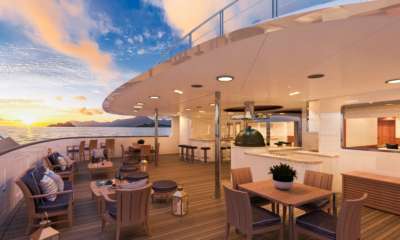



You must be logged in to post a comment Login